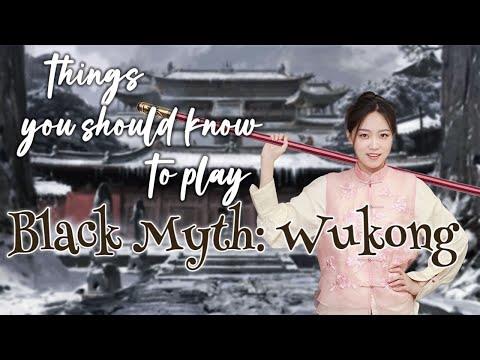(
MENAFN- PR Newswire)
BEIJING, Aug. 30, 2024 /PRNewswire/ --
A news report from org on "Black Myth: Wukong" and "Journey to the West":
These days, a monkey has gone viral across various social media platforms, triggered by the official release of China's indigenous action RPG "Black Myth: Wukong."
Continue Reading

From“Journey to the West” to“Black Myth”: What has kept Sun Wukong timeless?
In the game, players take on the role of "The Destined One," and embark on a journey by following the footprints of Sun Wukong, the protagonist of "Journey to the West." The first ever Triple-A game by China, "Black Myth: Wukong" won high ratings from many game-centered media both home and abroad; on day one of its release, it set a new record high in Steam's history of concurrent players.
Many plots and characters in the game were appropriated from the great Chinese mythology masterpiece "Journey to the West." For example, the final boss in the first level is a monster bear (Black Bear Guai) capable of fire attack; if the player has already acquired an item called "Fireproof Mantle," triumph will be much easier. To acquire the tool, a hidden boss "Elder Jinchi" must be defeated. Here, these characters, tools, and plots are all based on a chapter from "Journey to the West," where an old monk Jinchi tried to steal a kasaya robe from Tang Sanzang by setting fire, and Sun Wukong borrowed a Fireproof Mantle and protected his master; a monster bear however, stole the kasaya robe in chaos.
Hence, to better understand the plots in the game, many players, both domestic and abroad, begin to read the book, and some short-cut-seekers have turned to the TV series rendition of the work.
As the first romantic mythological novel in China, "Journey to the West" has been popular for several centennials and holds special significance for the Chinese.
From the birth of the stone monkey Sun Wukong to how he threw the Heavenly Palace into chaos, from how Sun Wukong protected his master Tang Sanzang through eighty-one ordeals to their final acquisition of the holy Buddhist scriptures, "Journey to the West" is a household name in China, while Sun Wukong, who is capable of seventy-two transformations and has fiery eyes with golden pupils, has for long been the very first hero admired and imitated by numerous Chinese children. Growing up, the children who were fascinated by Wukong stories tend to reopen the book in their adulthood, and ponder the philosophies hidden in between the lines.
For example, the main task for Tang Sanzang and his disciples was to attain the Buddhist scriptures, leading some to think this is a novel that intends to promote Buddhism. In fact, many elements from Daoism and Confucianism are blended into the novel. One can find Lord Lao Zi sitting with Ancient Buddha Dipamkara expounding the Way together; on the Ullambana Feast, the buddhas and deities created poems themed on happiness (Fu), official ranks (Lu), and longevity (Shou), which are typical ideals pursued in Daoism. In the book, the leading characters often quote from Confucian classics, while their behaviors from time to time reflect the values upheld by Confucianism, like benevolence, filial piety, courtesy, righteousness, etc. Such settings go beyond the doctrinal boundaries of any single religion, which not only reflect the trend of fusion among Confucianism, Buddhism and Daoism in the 16th century, but also testify to the internal inclusiveness of the Chinese culture.
Throughout "Journey to the West," there are many poems. But the line "I shall search the nameless rivers of the world, and climb all unknown mountain ranges" best captures the characters' journey to the west. The destination of the journey was Vulture Peak. Once on their way, Tang Sanzang and his disciples began to wonder how long it still had to take to arrive. Sun Wukong answered: "If you see your true nature, are determined to be sincere, and always turn your head back to enlightenment, then you will have reached Vulture Peak." Descriptions of such kind have given answers to issues like faith and perseverance, denoted by Chinese culture.
There are many other plots in the novel that offers peeks into the vulnerabilities of human nature, and many dialogues that encapsulate worldly wisdom in simple words.
Though "Journey to the West" portrays a world of deities, monsters, buddhas and demons, it actually covers topics that are highly relevant to human life and reality. What the novel tries to convey between the lines are deeply rooted in Chinese culture and philosophies, providing food for thought for all humanity.
Besides the Wukong in Black Myth, maybe you will also be interested in the Wukong in "Journey to the West."
China Mosaic
From "Journey to the West" to "Black Myth": What has kept Sun
Wukong timeless?
SOURCE org
MENAFN30082024003732001241ID1108619599
Legal Disclaimer:
MENAFN provides the information “as is” without warranty of any kind. We do not accept any responsibility or liability for the accuracy, content, images, videos, licenses, completeness, legality, or reliability of the information contained in this article. If you have any complaints or copyright issues related to this article, kindly contact the provider above.